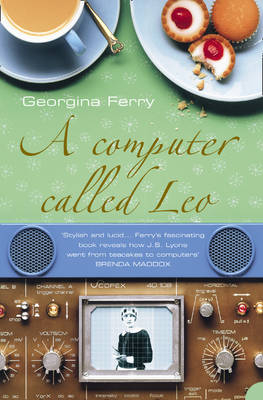
A Computer Called LEO
Lyons Tea Shops and the World’s First Office Computer
Seiten
2004
HarperPerennial (Verlag)
978-1-84115-186-1 (ISBN)
HarperPerennial (Verlag)
978-1-84115-186-1 (ISBN)
The eccentric story of one of the most bizarre marriages in the history of British business: the invention of the world's first office computer and the Lyons Teashop.
The Lyons teashops were one of the great British institutions, providing a cup of tea and a penny bun through the depression and the war, though to the 1970s. Yet Lyons also has a more surprising claim to history.
In the 1930s John Simmons, a young maths graduate in charge of the clerks' offices, had a dream: to build a machine that would automate the millions of tedious transactions and process them in as little time as possible. Simmons' quest for the first office computer – the Lyons Electronic Office – would take 20 years and involve some of the most brilliant young minds in Britain.
Interwoven with the story of creating LEO is the story of early computing, from the Difference Engine of Charles Babbage to the codecracking computers at Bletchley Park and the instantly obsolescent ENIAC in the US. It is also the story of post war British computer business: why did it lose the initiative? Why did the US succeed while British design was often superior?
The Lyons teashops were one of the great British institutions, providing a cup of tea and a penny bun through the depression and the war, though to the 1970s. Yet Lyons also has a more surprising claim to history.
In the 1930s John Simmons, a young maths graduate in charge of the clerks' offices, had a dream: to build a machine that would automate the millions of tedious transactions and process them in as little time as possible. Simmons' quest for the first office computer – the Lyons Electronic Office – would take 20 years and involve some of the most brilliant young minds in Britain.
Interwoven with the story of creating LEO is the story of early computing, from the Difference Engine of Charles Babbage to the codecracking computers at Bletchley Park and the instantly obsolescent ENIAC in the US. It is also the story of post war British computer business: why did it lose the initiative? Why did the US succeed while British design was often superior?
Georgina is the author of Dorothy Hodgkin: A Life, a biography of the only British woman scientist to win a Nobel Prize and THE COMMON THREAD (with John Sulston) which is short listed for the 2002 Samuel Johnson Prize. Born in Hong Kong, Georgina has lived in Oxford for the past 19 years. She has worked as a science writer and broadcaster.
| Erscheint lt. Verlag | 16.8.2004 |
|---|---|
| Verlagsort | London |
| Sprache | englisch |
| Maße | 129 x 198 mm |
| Gewicht | 175 g |
| Themenwelt | Geschichte ► Teilgebiete der Geschichte ► Technikgeschichte |
| Informatik ► Weitere Themen ► Hardware | |
| ISBN-10 | 1-84115-186-6 / 1841151866 |
| ISBN-13 | 978-1-84115-186-1 / 9781841151861 |
| Zustand | Neuware |
| Haben Sie eine Frage zum Produkt? |
Mehr entdecken
aus dem Bereich
aus dem Bereich
Buch | Softcover (2024)
Lehmanns Media (Verlag)
CHF 27,90
Digitalisierung neu denken für eine gerechte Gesellschaft
Buch | Hardcover (2023)
Quadriga (Verlag)
CHF 27,95
Vom Perceptron zum Deep Learning
Buch | Softcover (2022)
Springer Vieweg (Verlag)
CHF 27,95


